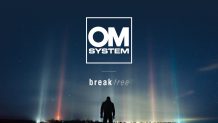The Somerset Mill secured this qualification through new investments in renewable energy generation. Sappi invested $49 million this past fall to upgrade the Somerset pulp mill’s recovery boiler and related equipment.
Prior to this recent investment, Sappi Fine Paper North America has led the industry in the use of renewable energy and already has the lowest reported carbon footprint among domestic coated paper suppliers, with more than 85% of the total energy being derived from renewable resources at its coated fine paper mills.
Under the Green-e certification, 100% percent of the electricity used to manufacture Opus web paper at the Somerset Mill is Green-e certified renewable energy that is generated onsite by Sappi. Opus web now joins the line-up of Sappi Fine Paper North America’s current Green-e certified product offerings: Sappi’s McCoy sheets and digital; Opus web, sheets and digital; Opus 30 web; and Flo sheets and digital; all of which have been Green-e certified since 2009 via renewable energy generated at the Cloquet Mill in Minnesota.
Green-e is an independent, third-party certification and verification program for renewable energy, ensuring that strict environmental and consumer protection standards are met.
Customers who choose one of Sappi Fine Paper North America’s Green-e certified products and one of the Green-e Marketplace re:print certified printers for their print job can further leverage that they are minimizing their environmental footprint through the Green-e Marketplace re:print program.
Based on the audit conducted for this certification, initial estimates indicate the amount of Green-e certified renewable electricity generated from renewable resources at Sappi’s Somerset Mill is approximately 260 million kilowatt hours (kWh) annually, which is comparable to the yearly electrical usage of approximately 24,000 homes consuming nearly 11,000 kWh per year.
In addition to obtaining Green-e certification through the recovery cycle upgrade project, Sappi’s Somerset Mill has also implemented several other major projects to improve energy efficiency and reduce the site’s carbon footprint over the past year. This includes work underway to improve the efficiency of the pumping systems of Paper Machine Number 3 for which Sappi received an Efficiency Maine grant. Through these projects and others, the Somerset Mill continues to reduce its reliance on fossil fuels.
In 2008, already operating significantly better than industry average, Sappi established a five-year goal of reducing emissions from fossil fuels by 40% over its 2007 baseline. The metric for this goal includes both direct emissions from Sappi Fine Paper North America’s mills, as well as emissions associated with purchased electricity. In terms of the Greenhouse Gas Protocol, this is known as Scope 1 and Scope 2 emissions. At the end of the company’s 2010 fiscal year, Sappi had already achieved more than a 40% reduction in just three years, outpacing targets proposed by climate change legislation.





